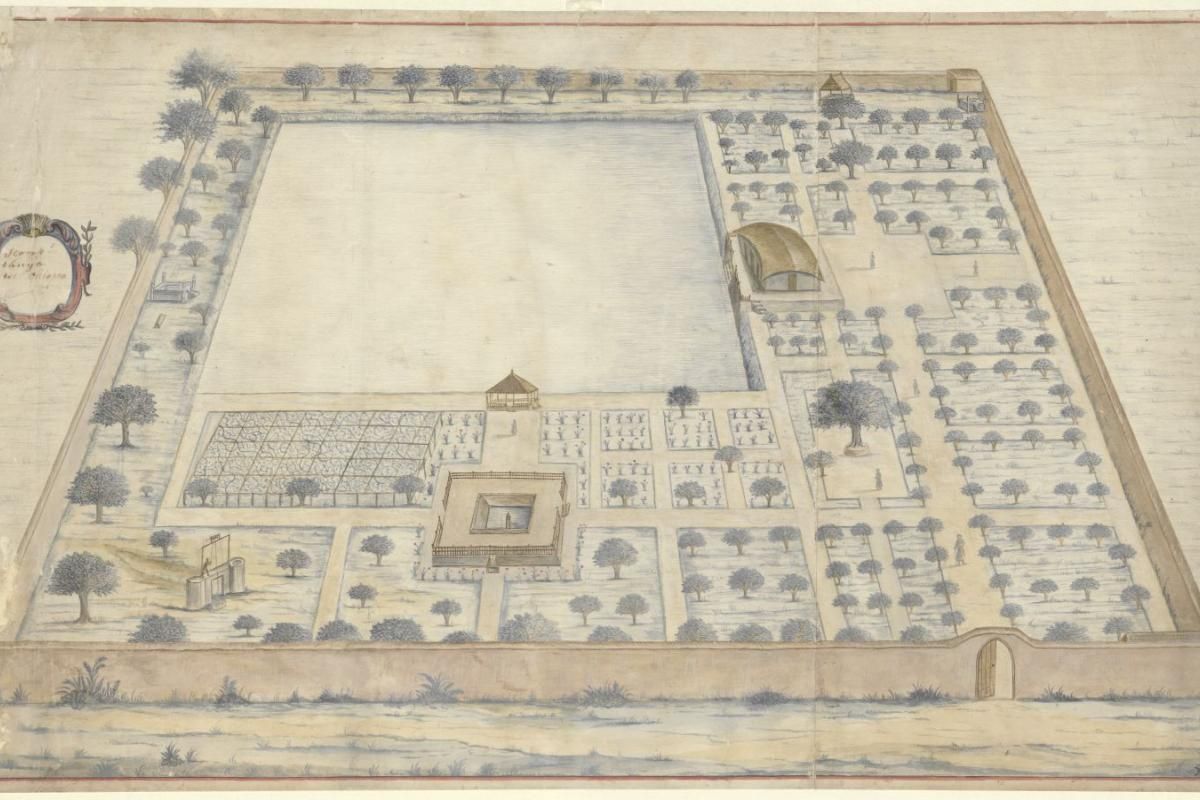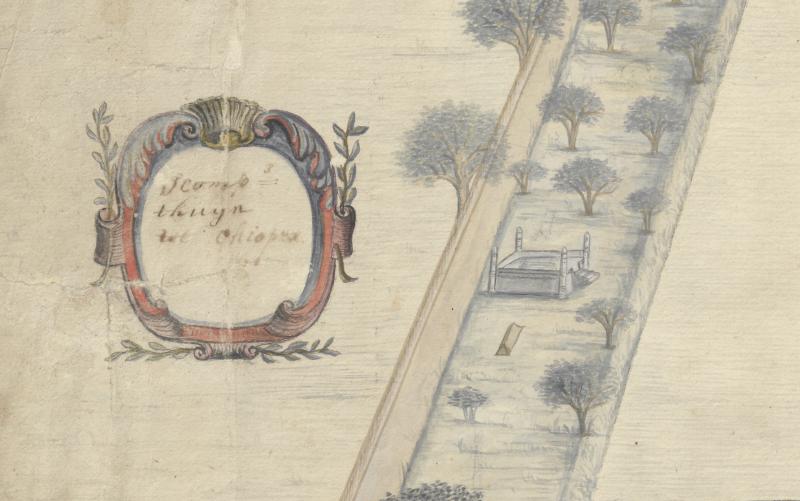
Chhapra - ‘Scomp:s thuyn’
Saltpetre, an important raw material for gunpowder, was extracted nearby the cities of Patna and Chhapra. Opium was also traded. The VOC establishment in Chhapra was established around 1650, not long after the establishment in Patna. The Chhapra branch soon became more important and eventually housed all the Dutch staff. In addition to a living area, the lodge of the VOC consisted of a saltpetre factory and a garden.
In 1671, the Egmond ship's doctor Nicolaus de Graaff made a drawing of "Scomp:s thuyn" (the company garden), located on the Ganges. The garden was highly regarded and could have rivalled the gardens of the Mughal nobles.
 Detail 'Scomp:s thuyn tot Chiopra' by Nicolaas de Graaff, 1671. Collection Leiden University Libraries.
Detail 'Scomp:s thuyn tot Chiopra' by Nicolaas de Graaff, 1671. Collection Leiden University Libraries.
The drawing shows two grave monuments in the garden to the left of the pond. It is not yet known who were buried in the garden. Nowadays nothing can be found of the garden and the saltpetre factory, partly because the course of the Ganges has changed. Later, presumably because of the high mortality, a Dutch cemetery was built just outside Chhapra near Karinga.
Header: 'Scomp:s thuyn tot Chiopra' by Nicolaas de Graaff, 1671. Collection Leiden University Libraries.
Literature
- Pol, Bauke van der, De VOC in India – Een reis langs Nederlands erfgoed in Gujarat, Malabar, Coromandel en Bengalen, Zutphen, Walburg Pers, 2011
- Grote Atlas van de Verenigde Oost-Indische Compagnie VI Voor-Indië, Perzië en Arabisch Schiereiland, Voorburg, Atlas Maior, 2010
Reference: SC-IND-004
- Last updated on .


